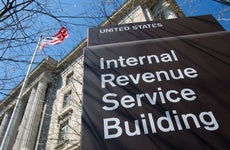What are 12b-1 fees?

The Bankrate promise
At Bankrate we strive to help you make smarter financial decisions. While we adhere to strict , this post may contain references to products from our partners. Here's an explanation for .
A 12b-1 fee is an expense sometimes charged by mutual funds to their investors that pays for the fund’s marketing and distribution costs, as well as other shareholder services. These fees frequently can be used to pay commissions to brokers who sell the fund.
As a mutual fund investor, it’s important to be aware of these costs and to try to minimize them, because they can significantly eat into your returns over time.
12b-1 fees: What they are
These fees are named for the SEC rule that allows mutual funds to pay marketing expenses out of the fund’s assets. The fee is separate from a fund’s management fee, which covers operating costs such as hiring a portfolio manager and investment team.
The 12b-1 fees are especially important to watch out for because they go toward costs, like marketing and distribution, that ultimately benefit the fund’s managers, not its investors. Initially, the thought was that attracting new investors through sales and marketing would help lead to lower costs for all, but that has not been proven true.
The cost of these fees can vary from fund to fund, but may run as high as 1 percent annually, with a 0.75 percent charge for commissions and 0.25 percent for services. While a 1 percent fee may not sound like a lot, the impact can be substantial over a long investing life.
Example of 12b-1 fees
Let’s look at an example: An investor who owns shares in a fund that earns a 9 percent annualized return over a 30-year timeframe will end up with more than 13 times their original investment if they didn’t contribute any additional money along the way. But if that same investor had to pay an additional 1 percent in annual costs, lowering the return to 8 percent, they’d end up with just 10 times their original purchase. These costs add up over time.
John Bogle, the late founder and former chairman of the Vanguard Group, often reminded investors of the importance of tracking these seemingly small costs and their impact on returns. “The record could hardly be clearer: The more the managers and brokers take, the less the investors make,” Bogle wrote.
How to avoid 12b-1 fees
So what can be done to steer clear of these return-killing fees? The first thing to do is to find out if you’re paying them. A fund’s prospectus will have information on the fees it charges and 12b-1 fees will be listed alongside other expenses such as the management fee, legal fees and whether the fund comes with a sales charge.
For most investors, it makes sense to invest in passively-managed funds such as low-cost index funds or ETFs. These funds offer the ability to invest in a broad cross-section of businesses at an extremely low cost. Index funds don’t try to pick whether Apple will do better than Google or whether Pfizer will outperform Johnson & Johnson. They will own all the stocks in the index they are designed to track, and because of the funds’ low turnover and management style, expenses are kept to a minimum.
One of the most popular index funds to own tracks the S&P 500 index, which includes hundreds of the largest companies in the U.S., many of which have global revenue bases. This allows investors to own a diversified group of stocks without having to decide which individual companies to own. The Vanguard S&P 500 ETF (VOO) allows its investors to earn the U.S. stock market return for a cost of just 0.03 percent annually. Some index funds, like Fidelity’s ZERO Large Cap Index (FNILX), have cut expenses all the way to zero.
Bottom line
When it comes to 12b-1 fees, make sure you know whether you’re paying these by checking the fund’s prospectus and consider making investments in passively-managed funds that come with significantly lower annual expenses instead.
Editorial Disclaimer: All investors are advised to conduct their own independent research into investment strategies before making an investment decision. In addition, investors are advised that past investment product performance is no guarantee of future price appreciation.
Related Articles



